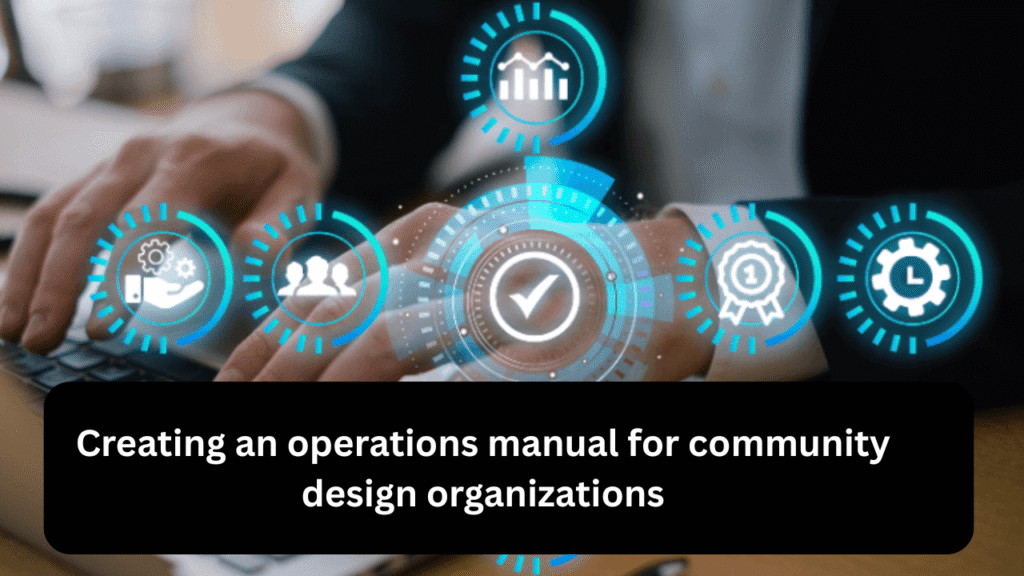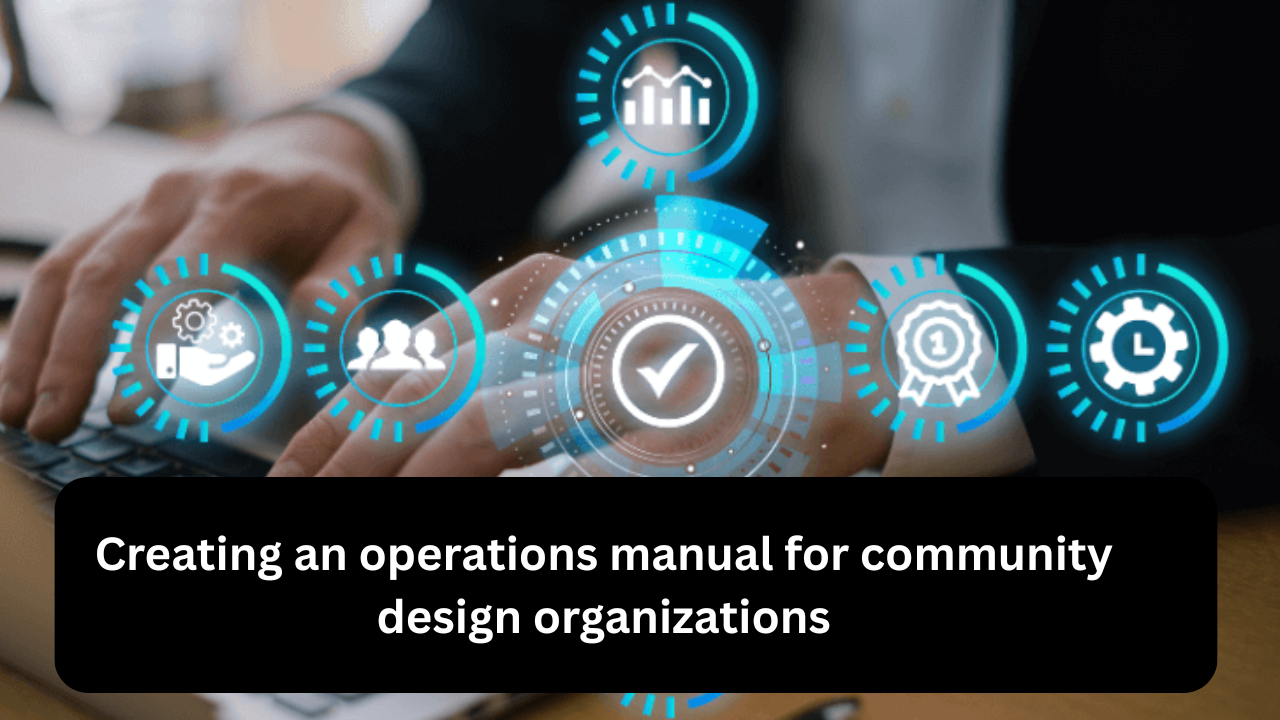
Creating a strong operations manual isn’t just about documentation—it’s about creating clarity, consistency, and cohesion across your community design organization. Whether your team is working on urban regeneration, rural design projects, or grassroots environmental work, a well-structured manual serves as the internal compass that guides every task, decision, and project.
This article explores how to develop an operations manual tailored for community-based design organizations, outlining key sections, best practices, and tools to ensure efficiency, legal compliance, and sustainable team alignment.
Overview Table: Essential Components of an Operations Manual
| Section | Purpose |
|---|---|
| Mission & Vision | Clarifies organizational identity and direction |
| Roles & Responsibilities | Defines staff and volunteer functions |
| Workflow & Procedures | Standardizes day-to-day operations and decision-making |
| Financial Protocols | Ensures transparency, budgeting, and expense controls |
| Legal & Compliance | Covers governance, licenses, and risk management |
| Design Ethics & Guidelines | Aligns projects with community values and inclusivity |
1. Why Every Community Design Org Needs an Operations Manual
Community design organizations are often collaborative, grassroots, and flexible by nature. While this is a strength, it can lead to inconsistency if operational standards aren’t in place. A well-developed manual:
- Helps onboard new team members quickly
- Enhances accountability and workflow clarity
- Protects against legal and financial mishaps
- Ensures design projects are implemented with quality and impact
Whether your org is two people or twenty, a manual keeps everyone aligned with purpose and process.
2. Step-by-Step Guide to Structuring Your Manual
A. Start with the Big Picture
- Mission Statement: What is your reason for existing?
- Vision Statement: What long-term impact are you working toward?
- Core Values: Include design justice, equity, and sustainability principles if relevant.
B. Define Organizational Structure
- Use an organizational chart to show hierarchy and roles.
- Include titles, reporting lines, and brief descriptions of responsibilities.
C. Outline Operational Workflows
Detail standard operating procedures (SOPs) such as:
| Activity | Procedure |
|---|---|
| Community Consultations | Schedule, facilitator roles, documentation steps |
| Design Review Process | Timeline, feedback loops, community approval stages |
| Volunteer Coordination | Onboarding, roles, tracking hours |
| Materials Procurement | Vendor selection, approval limits, sustainability criteria |
These workflows minimize guesswork and improve efficiency.
3. Include Clear Roles and Responsibilities
A successful manual outlines who does what and when. Consider this format:
| Position | Primary Tasks | Reporting To |
|---|---|---|
| Project Coordinator | Oversees site logistics, liaises with stakeholders | Program Director |
| Design Intern | Drafts design concepts, assists in prototyping | Lead Designer |
| Community Liaison | Organizes meetings, gathers local input | Project Coordinator |
| Finance Officer | Tracks expenses, handles reimbursements | Executive Director |
Updating this section regularly as the team evolves is key.
4. Document Financial and Administrative Policies
To avoid confusion or mismanagement, your manual should include:
- Budget planning process
- Payment approvals and thresholds
- Reimbursement protocols
- Donor or grant reporting obligations
- Inventory or asset tracking
Include sample forms, templates, and contact points for finance queries.
5. Compliance, Safety, and Legal Sections
Even small design organizations must abide by legal requirements. Address:
- Insurance coverage and liabilities
- Data privacy for community consultations
- Health and safety on design sites
- Licenses for public installations
- Consent forms for documentation use
This section protects both the organization and its beneficiaries.
6. Embed Your Design Philosophy and Ethics
Community design isn’t just about aesthetics—it’s about people. Use your manual to codify your organization’s design ethics:
- Prioritize participatory design principles
- Commit to universal accessibility
- Acknowledge power dynamics between designers and communities
- Integrate environmental sustainability standards
This helps unify teams across diverse projects and stakeholders.
7. Tools, Templates, and Digital Access
Ensure the manual is:
- Digitally accessible (Google Drive, Notion, or PDF-based manual)
- Searchable with a clear table of contents
- Interactive, linking to templates, forms, and resources like:
- Design Brief Templates
- Community Feedback Forms
- Risk Assessment Checklists
- Budget Planning Sheets
Design it for easy navigation and regular updates.
8. Keep It Living: Review and Update Cycles
An outdated operations manual is as bad as none. Set a review cycle:
- Quarterly Review of workflows and forms
- Annual Review of policies, structure, and strategic vision
- Assign a designated team member or committee to maintain the manual
Encourage team feedback to keep it grounded in daily reality.
FAQs
1. How long should an operations manual be for a small design NGO?
Aim for 20–40 pages, focusing on clarity and relevance rather than length.
2. Should volunteers have access to the manual?
Yes, provide them with a version that includes relevant procedures, ethics, and contact protocols.
3. What’s the best tool to create and manage an operations manual?
Digital platforms like Notion, Confluence, or Google Docs allow for easy collaboration and updates.

